An electric surge shot through me when I plugged in my first electric tenor guitar—a buzz that was nearly as electric as the instrument itself. As a seasoned 6-string guitar player, the shift to this quirky, 4-string electric counterpart led me onto a path of musical discovery, rich in resonance and innovation. But that’s a song yet to be completely played. I invite you to journey with me as we strum through the options, availability, and characteristics of these unique stringed marvels.
Imagine harnessing the power of a bass guitar, the versatility of an electric 6-string, and the comfort of a ukulele, all in one compact 4-string package. That’s the magic of the electric tenor guitar, an underappreciated gem in the guitar world. Coming from a background in engineering and luthiery, my fascination with these instruments is as much about their design and construction as it is about their sound.
Now, you might question, “why would a seasoned guitarist chop off two strings and go electric?” It’s a baffling concept for those bred with the six-string blues, but I assure you this daring move transcends an ordinary musical experience into an extraordinary one. And we are just sparking the discussion.
Stay tuned as we string together the past and present of the electric tenor guitar, dissect popular brands and models, explore their distinct characteristics, and unearth the secrets to their optimal use and care. Together, let’s tune into the harmony of the electric tenor guitar and amplify our understanding of why this 4-string wonder deserves a leading role in more musicians’ collections.
History and Evolution

With experience, comes insight, and after many years of strumming on numerous vintage and custom tenor guitars, I have grown to appreciate their history, and how they evolved over time. My background in instrument design and construction has provided me with a valuable perspective that allows me to see firsthand the evolution of these incredible instruments.
As a lover of these stringed marvels, I’ve always been curious about their origin, about how the first set of hands picked at the strings and produced the first melody. This curiosity has led me to delve deep into their history, to seek out their roots and watch their evolution over the years. Their transformation is a tale truly worth telling.
And here’s something that never fails to intrigue: Did you know that tenor guitars have ties back to the 1920’s jazz age? Their evolution tells a rich tale, one marked by innovation and cultural shifts. Born in an era steeped in music and merriment, they quickly came to be an integral part of jazz bands. However, despite their initial popularity, the wane of jazz contributed to a slump in the demand for tenor guitars.
In the 1960s, the tides of fortune began to turn for the tenor guitar again. Inspired by the beautiful sounds produced by vintage tenor guitars, musicians started creating custom tenor guitars. Adding to this, the resurgence of folk music catapulted the tenor guitar back into the spotlight, ensuring their survival and sparking innovation in their design and construction.
Essentially, the evolution of the tenor guitar is a testament to the resilience of craftsmanship and innovation musical creativity. The transformation from vintage to custom tenor guitars serves as a mirror reflecting the change in musical tastes and preferences over the decades. It’s a continuous journey and I feel tremendously privileged to witness it, and contribute to it through my work.
Moving forward, I’ll dive into the world of popular brands and models, drawing on my personal experiences and observations. Understanding the historical context has made me more discerning about the characteristics that make certain brands and models standout. After all, the beauty of the tenor guitar is more than just its melody; it’s also in the stories that reside within its resonance.
Popular Brands and Models
Brands Overview

Transiting seamlessly from the previous chapter that broadly discussed ‘Popular Brands and Models’, an in-depth exploration into specific tenor guitar brands is important to make informed decisions. These brands significantly influence the overall experience that tenor guitar offers, shaping its sound, playability, and reliability. They indeed manifest the beauty of the ‘Options, Availability and Characteristics’ of electric tenor guitars.
Through my years of experience with the New England Luthiers group, I’ve honed my understanding of these brands, acquiring an education on their unique characteristics. I’ve worked closely with renowned, pioneer luthiers and emerging ones, and each engagement has enriched my perspective on tenor guitar brands. The brands making a mark in this arena significantly define the tenor guitar landscape through their charming tonal nuances, innovative design techniques and state-of-the-art technology.
The big names like Gibson, Martin, and Fender certainly command respect in the tenor guitar market owing to their unparalleled legacy, singularity in craftsmanship, and consistency in quality. They are not just brands; they have become synonymous with the electric tenor guitars’ evolution narrative. Their masterpieces are celebrated and loved by music enthusiasts across geographies. I’ve been especially impressed by their tenor guitar’s craftsmanship, that elegantly blend traditional techniques of lutherie with modern innovations.
And then, there are newer, lesser-known brands like Eastwood and Gold Tone that are crafting their own niche. Their guitars don’t just offer more availability and affordability but also an expanded range of sound options and aesthetic choices. Their endeavor to make tenor guitars accessible to the masses deserves specific attention and appreciation.
My in-depth understanding of tenor guitar brands comes with an aim to help you navigate the fascinating yet overwhelming world of tenor guitars. At the core of my expertise is the desire to empower you, the player, with essential knowledge, necessary for making confident choices amidst the myriad of tenor guitar options.
Moving ahead, we’ll plunge into the details of Model Comparison, blending our understanding of the brands with models’ specifics to give a more holistic view of your tenor guitar options. This structured approach ensures a comprehensive understanding, leaving no stone unturned when discussing electric tenor guitars.
Model Comparisons
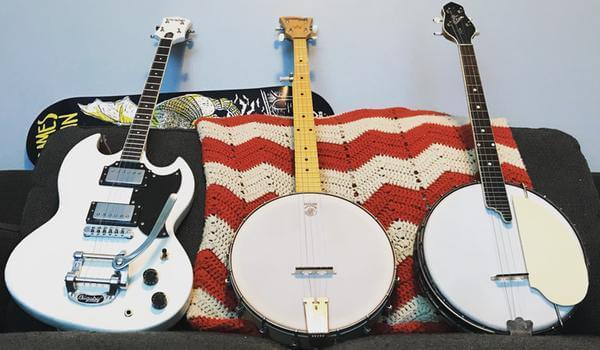
As we dwell deeper into our exploration of tenor electric models, it’s essential to understand that the performance and sound of each model, even within the same brand, can be starkly different. Through my roles in editing books on stringed instruments, comparison of different models became second nature, augmenting both the width and depth of my understanding.
Model comparisons form an integral part of our discussion on ‘Popular Brands and Models’. This ingrained habit of discerning the nuanced differences among models allows us to appreciate the uniqueness and subtleties inherent in each tenor electric guitar model. Every guitar, like its player, has a distinct personality, and comprehending the detailed distinctions facilitates making informed purchase decisions.
I’ve learnt first-hand that model comparisons should not merely be about the technical specifications. Rather, it should stretch beyond to encompass more subtle elements, such as the tonewood used, the craftsmanship involved, and of course, the mellifluousness of the sound produced. Careful contrasting helps bring out these nuances, creating a rounded, holistic view of each model, empowering us to know which would be the best fit for our unique needs and playing styles.
For instance, comparing similar models from different manufacturers can often reveal startling differences in design philosophy, construction quality, and sound profiles. Similarly, analyzing variations of a single model over time can provide interesting insights into how a brand’s vision, technique, and approach to sound production have evolved.
In conclusion, it’s crucial to consider model comparisons as an inherent element of tenor electric guitar understanding and appreciation. It’s a mix of contrast and harmony, with each model featuring its set of strengths and peculiarities, contributing significantly to their unique charm. I am excited to delve deeper into a comprehensive comparison of specific models in the upcoming Brands Overview section. These comparisons not only enrich our knowledge but also enable us to make well-informed decisions about which guitar would suit us best.
Characteristics and Components
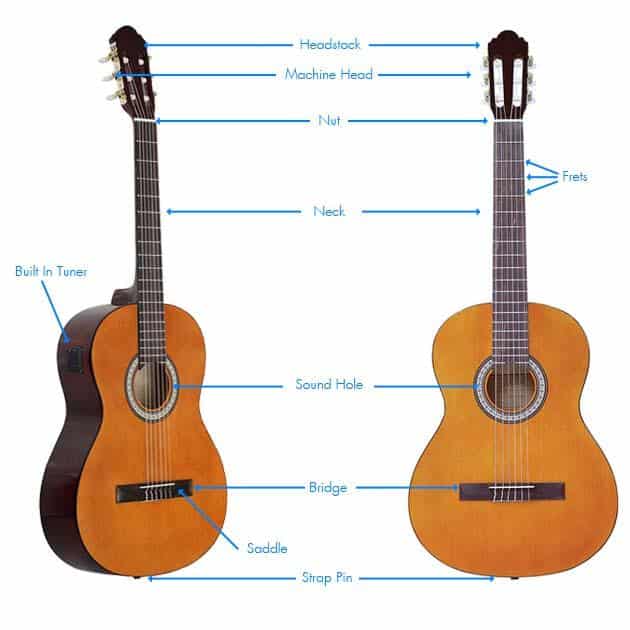
First and foremost, the soul of electric tenor guitars, whether they are solid body or acoustic-electric, lies in their component parts. Understanding the characteristics and components of tenor guitars requires delving into the intimate details, each element painstakingly chosen to contribute to its signature sound and feel.
Ever lifted a solid body tenor guitar and felt its weight? The density of the wood, the firmness of the strings, the texture of the delicate inlays. They’re all handsomely crafted details that you might brush against, not noticing they are the heart of the process. I’ve been infatuated with the intricacies of these beautiful instruments for as long as I can remember, and I’ve both created and played them. Let’s dissect the ingredients that form these musical masterpieces.
Apart from wonderfully resonant tones produced by the guitar body itself, tenor guitar pickups work tirelessly behind the scenes, magically humming a delightful symphony of vibrations into auditory life. Constructed precisely, these pickups can be single coiled or humbucking, each with their own unique attributes. They do the critical job of turning your plucking and strumming into an electric signal ready for amplification. They are the voice of your guitar, and their placement and quality significantly impact the tone.
Differences between the solid body tenor guitar and its acoustic-electric cousin are also worth noting. Despite having the distinct “tenor” sound, each articulates the sound in their own unique way due to the different materials used in their construction. A solid body tends to have a warmer and heavier tone compared to the crisp and bright sound of an acoustic-electric tenor guitar.
It’s not just the body that sets these guitars apart, but also the arrangement and quality of the frets, the resilience of the neck, and the design of the bridge. Every single component is assembled with absolute care, and their combination results in a very unique and specific kind of magic. As someone who’s spent a lifetime with these guitars, I can tell you that there are few things as enjoyable as strumming the perfect chord and feeling the resonance of a well-constructed tenor guitar.
So, when you pick a tenor guitar, be aware of the characteristic intimate orientation of its components. Understand them. Appreciate them. They will help you connect with your music on a new, raw, authentic level. The journey of understanding and loving tenor guitars stretches beyond the simple joy of strumming a few chords. It’s a matter of celebrating and respecting the sheer innovation and craftsmanship that renders us these marvelous instruments.
The time and passion that goes into each tenor guitar’s creation, the decision behind each feature, and the role they play, is what makes all the difference. From the grooves in the wood to the wiring of the pickups. Getting a grip on the intricacies of these beautiful instruments will ignite a new level of affinity, blossoming a deeper connection between you, the musician, and the very tool that translates your emotions into music.
How to Use and Care
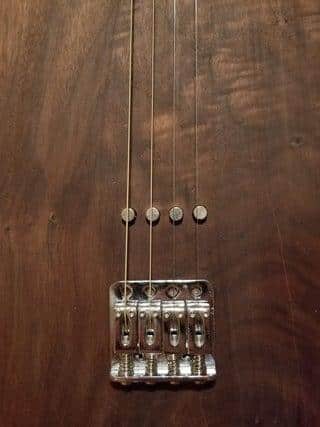
Having traversed the historical journey, braved through model comparisons, and dissected the characteristics of electric tenor guitars, we now delve into the crux of the matter: knowing how to get the best out of this remarkable instrument.
Strumming isn’t all there’s to the art of guitar playing. Curious about how to get the best out of your tenor guitar? The secret lies in tuning, string setup, and the care regime adopted for your guitar. From my years of immersion in the world of tenor guitars, I’m here to share the tips and tricks that will revolutionize your playing experience.
Tenor Guitar Tuning: The backbone of an excellent tenor guitar performance is tuning. While standard tuning goes CGDA (from the lowest pitched string to the highest), you’re free to experiment with alternate tunings like GDAE, DGBE or even tune it to the chords that suit your style best. If you’re transitioning from a 6-string guitar, DGBE will ease the learning curve, retaining the familiar chord shapes and scale patterns.
Electronic tuners make this process a cinch. Simply clip one onto your guitar headstock, strum a string, and the tuner will display its pitch. You can then adjust the relevant tuning peg, higher or lower until you hit the exact note. Remember, an out-of-tune guitar will always compromise your performance, so take the tuning bit seriously.
Tenor Guitar Strings: The choice of tenor guitar strings impacts both the tone and playability of your instrument. The secret to a great string setup lies in understanding your sound preference. Like your tuning, it shadows your style and genre. Steel strings, for instance, give off a bright, loud tone. Nylon strings, on the other hand, are softer, producing a mellow, warm sound. Be sure to change your strings with regularity, as worn-out strings can compromise the vibrancy of your guitar’s sound.
Tenor Guitar Setup: A properly set up guitar can make the world of a difference. If not done properly, it can lead to issues like fret buzzing or difficulty in pressing down the strings. Prioritize setting up your guitar from the get-go to avoid these hurdles during your musical journey. From the truss rod adjustments to the action and intonation, setting up a tenor guitar can be complex, but with patience and commitment, you’ll find your sweet spot.
Caring for your tenor guitar goes beyond playing it right. It is about extending its lifespan, maintaining its sound quality, and making it a reliable musical companion. Always clean your guitar after playing to ward off dust and sweat. Proper storage, away from extreme temperatures and humidity is imperative. A case humidifier for dry climates and a dehumidifier for too humid conditions can come in handy. Regular inspection for signs of damage like cracks or warping will also ensure you catch any issues early enough for rectification.
Life experience and countless hours experimenting and observing have taught me that the art of guitar playing isn’t just in the strumming. It’s in understanding the personality of your tenor guitar and knowing how to tailor it to fit your musical style. The journey gets a lot easier once you master these key aspects: tenor guitar tuning, tenor guitar strings, tenor guitar setup, and your guitar care regime. Let the journey continue!
Where to Buy
New Guitars
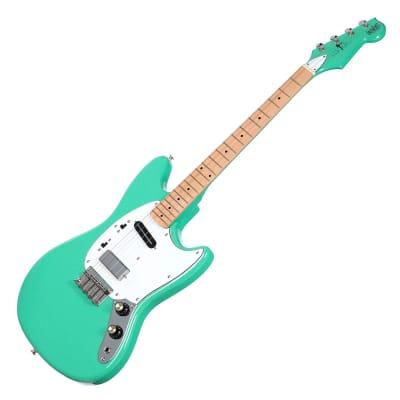
In the realm of purchasing a tenor guitar, the category of ‘New Guitars’ holds significant relevance, particularly for those prioritizing a pristine instrument for optimal performance. My unique relationship with multiple luthiers has provided me with invaluable understanding of where to locate high-quality, new tenor guitars that seamlessly marry a musician’s requirements and budgetary constraints.
In search for a tenor guitar for sale, selecting a new instrument comes with certain advantages. You gain the assurance of a flawless guitar, untouched with a full lifespan ahead; a noteworthy consideration for any serious musician. Knowing exactly where the instrument comes from and having recourse with the seller should anything be awry, are critical aspects that come with the territory of buying new.
There are many trusted stores, both online and physical, offering a plethora of brand-new tenor guitars. While this may be a potentially larger investment than purchasing second-hand, the benefits of owning a new guitar make it a worthwhile consideration.
In the exhilarating journey of finding your ideal tenor guitar, the appeal of a brand-new instrument cannot be understated. The allure of its untouched nature, and the certainty it brings, presents an enticing option that aligns seamlessly into the broader theme of ‘Where to Buy’.
Second-Hand Guitars
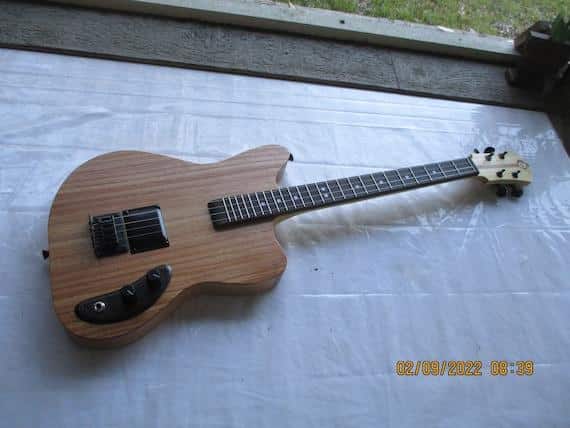
After delving into the realm of new guitars, I reckon it’s necessary to shed some light on the relevance of second-hand, particularly vintage tenor guitars. My affinity for these guitars grants me the privilege of knowing a thing or two about where to procure these second-hand treasures. Indeed, there’s something intrinsically charming and distinctive about the warm, worn tones of such venerable pieces.
Second-hand guitars, especially vintage ones, carry an enthralling legacy which adds a depth of character unattainable in modern constructs. They have weathered changing music genres, evolved through countless performances, and encompass soul and history that could breathe life into your play. Scored from reputable sources, not only do these vintage tenor guitars satiate your aesthetic sentiments but are a valuable addition to any collection.
Although acquiring such pieces needs caution – verifying authenticity, examining physical condition, ensuring functionality, but the rewards are indeed priceless. And I find no better joy than helping fellow enthusiasts navigate this very pursuit.
As we proceed to examine common questions around these exceptional instruments, let’s reflect upon the unique allure of vintage tenor guitars and the profound musical enrichment they offer. While they may require a little more effort to source and maintain, the incredible sonic and historic value they bring to your collection is unquestionably worth it.
FAQs
What is an Electric Tenor Guitar?
What options are available for Electric Tenor Guitars?
Where to buy Electric Tenor Guitars?
What are some characteristics of Electric Tenor Guitars?
Conclusion
In this journey of discovery, how has the electric tenor guitar captivated your musical imagination? For me, the allure of tenor guitar playing has proven irresistible, turning intrigue into dedicated expertise as I explored and unraveled the wonders of this unique instrument. With all its profound nuances, variations and personal variances, the tenor guitar stands out as an intricate masterpiece of musical finesse. Pertinent options, availability, and characteristics come alive, providing a rich tapestry of choices for both neophytes and seasoned guitarists.
The transformative power of a suitable tenor guitar amp is quite remarkable. As the amplifier to a guitar, my hope is that this comprehensive guide amplifies and complements your tenor guitar experience. From brands and models, through comparisons and components, towards effective use and care, and further to savvy shopping—our collective journey through these aspects was indeed insightful.
As we wrap up this guide, I reflect on my own personal journey in understanding and playing the tenor guitar. Perhaps one of the greatest strengths of the tenor guitar is its pronounced versatility. Whether playing new or second-hand models, mastering diverse musical styles, or indulging in the sheer joy of experimentation, we’ve affirmed that the tenor guitar holds a promise for endless possibilities.
May this exploration equip and inspire as you delve deeper into the world of tenor guitars, bridging knowledge gaps and nurturing your growth. Embrace the adventure, relish in the discovery, and render beautiful music with your tenor guitar.
In conclusion, I hope this guide has been a valuable companion to your musical journey, and as we continue to explore the myriad of possibilities that the electric tenor guitar offers, always remember—the music lies within you, the guitar is merely your vessel of expression.
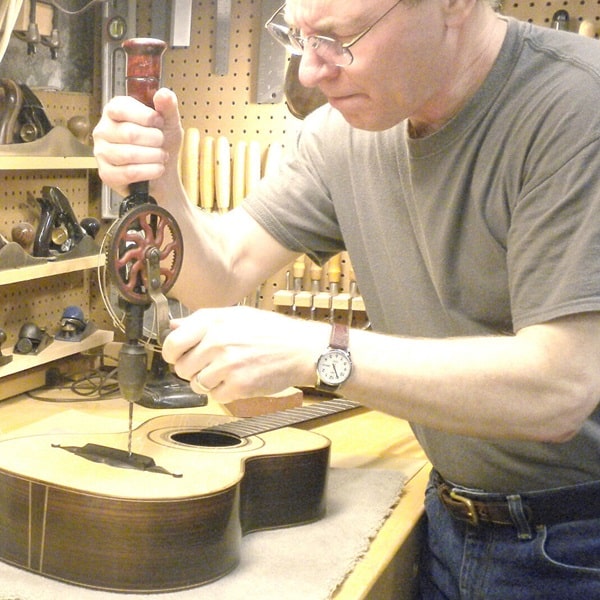
R.M. Mottola, an engineer-turned-luthier, revolutionizes stringed instrument design with his deep focus on acoustics and ergonomics since 1994. As editor of the Savart Journal and a key contributor to American Lutherie, Mottola merges science with artistry in lutherie. He enriches the field with his extensive knowledge, shared through his Liutaio Mottola website, making him a beacon in the world of modern instrument craftsmanship.
